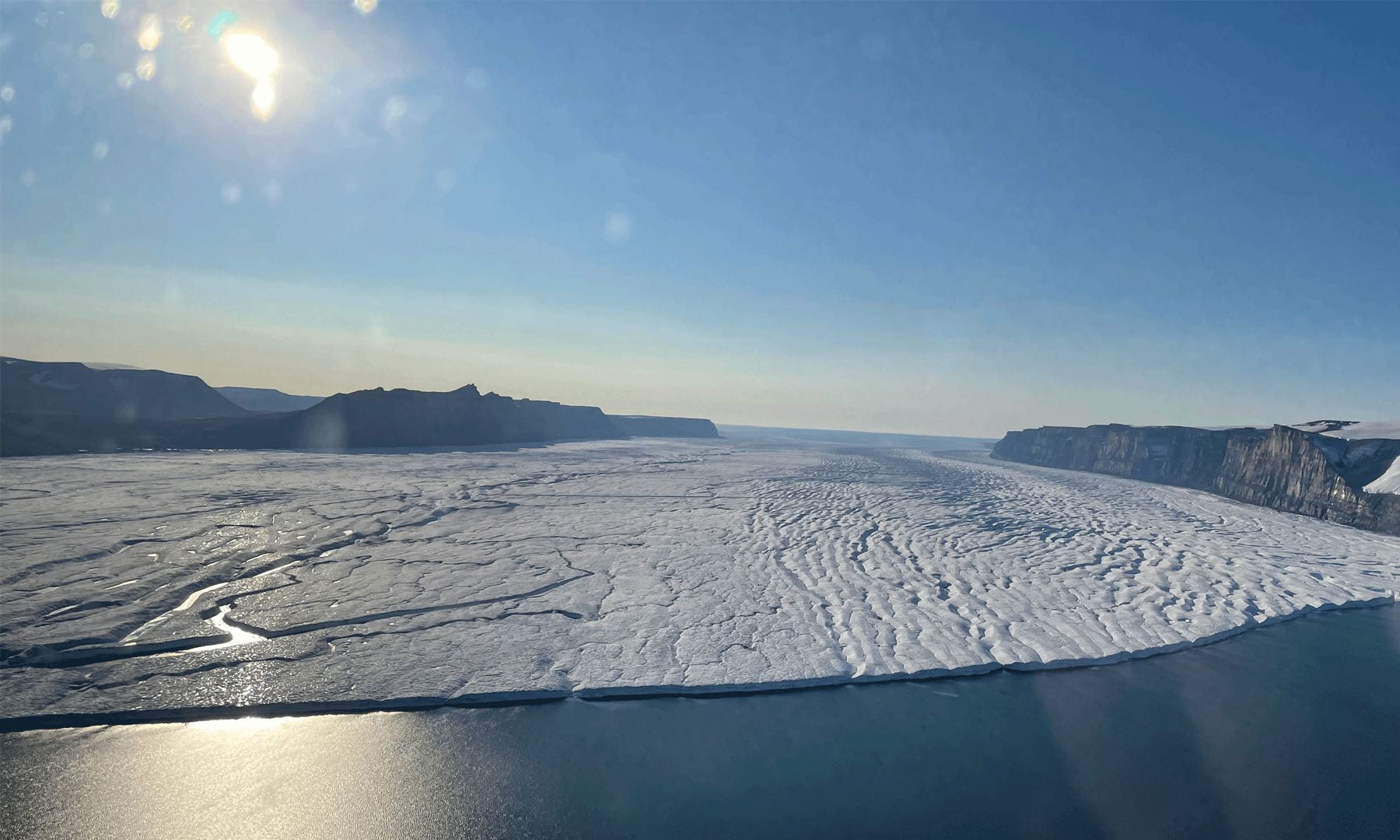New Research Shows Remaining Ice Shelves in Greenland On the Verge of Collapse

The Ryder ice shelf in Greenland. Photo by Mike Wood.
Warming oceans accelerate ice melt, triggering ice shelf collapses in Northern Greenland
New research reveals the alarming impact of climate change on ice shelves and glaciers in northern Greenland. Warmer ocean waters, directly linked to climate change, have led to the rapid disintegration of ice shelves and are now pushing the remaining ice shelves to the brink of collapse.
In a groundbreaking study published in the journal Nature Communications, researchers from San José State University’s Moss Landing Marine Laboratories,the French National Centre for Scientific Research (CNRS), the University of Grenoble Alpes and the University of Copenhagen found that the remaining ice shelves in northern Greenland have lost more than a third of their mass.
“Ice shelves are critical for the health of the Greenland ice sheet because they act like dams that help to hold back ice on land. And in northern Greenland, there is enough ice to raise sea level by more than six feet,” says Mike Wood, assistant professor and oceanographer at San José State University’s Moss Landing Marine Laboratories and co-author of the study.
Using data from satellites, aircraft, and numerical models, researchers studied eight ice shelves flowing from glaciers in northern Greenland, measuring the melting occurring beneath the floating ice platforms. They observed for the first time that this melting had drastically increased since the 2000s.
“When we first had the maps, we saw that the rates of underwater melting were incredibly high, reaching over a hundred meters of melt per year,” explains Romain Millan from the University of Copenhagen, the study’s lead author.
By collecting ocean temperature measurements over the past 40 years and comparing them with melt estimates, the scientists determined that this increase in melting was primarily due to the significant warming of ocean waters throughout the region.
“Under current climate conditions, ocean temperatures around northern Greenland will continue to rise, increasing melt rates on Greenland’s last remaining ice shelves,” says Wood.
The potential consequences are far-reaching. These ice shelves serve as critical barriers preventing land-based ice from flowing into the ocean.
“If these ice shelves collapse, as has happened to neighboring glaciers, there is a real risk that this region could become the largest contributor to sea level rise in the entire Greenland ice sheet,” concludes study co-author Anders Bjørk from the University of Copenhagen.
The rapid changes observed in Greenland could also provide insight into the impending challenges Antarctica may face in the near future.
Discover other projects at Moss Landing Marine Laboratories.




